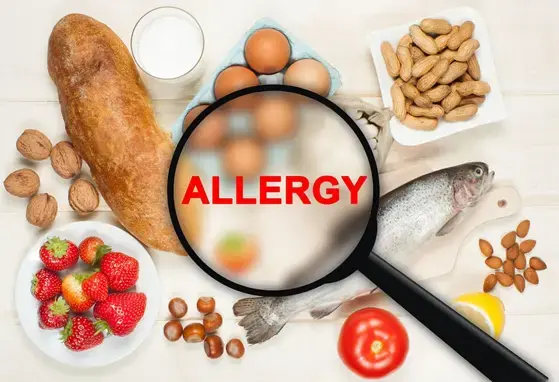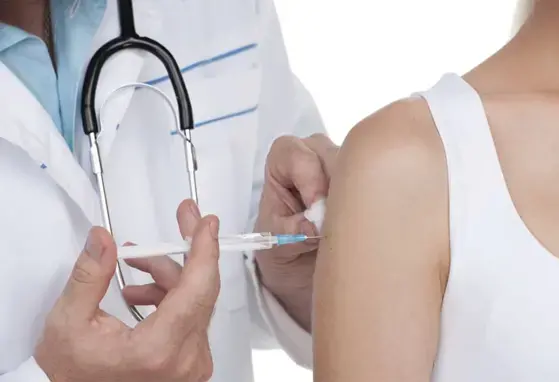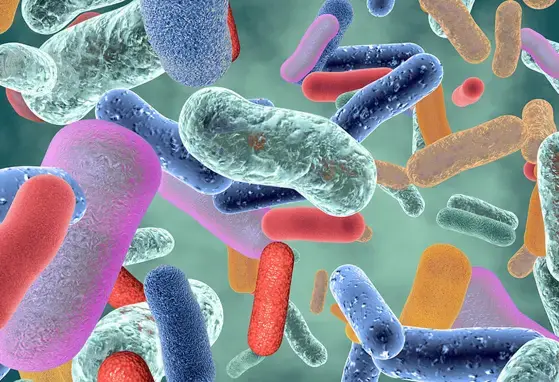Interview with Dr. Jose Hurtado – The emerging science behind the role of the microbiota in mastitis

- The microbial etiology of mastitis and its effects on human milk
- The role of probiotics in the prevention of mastitis
Dr. Jose Hurtado
Section Chief of Paediatrics Service, Hospital Universitario Virgen de las Nieves,
Granada, Spain
- What is the composition, origin and functional significance of the microbiota in human milk?
- How does mastitis arise and how is the human milk microbiome implicated?
- With human milk as the primary source of nutrition for many infants, what are the implications of an imbalanced human milk microbiota on an infant’s health and development?
- Which interventions can modulate a healthy microbiome in human milk, and what data is available to support its use?
- Are there any safety concerns with the use of probiotics during lactation?
- What are your practical tips for healthcare professionals?
JH: Dr. Jose Hurtado
R: Reporter
R: What is the composition, origin and functional significance of the microbiota in human milk?
JH: Human milk contains a host of bioactive compounds and nutrients which meet the nutritional needs of an infant.1 Although once considered sterile,2 it was in 2003 when culture techniques allowed us to learn about a large community of bacteria present in human milk,3–5 predominated by staphylococci, streptococci,3,6 lactobacilli,4,6 and bifidobacteria.6 This community was found to aid the colonization of an infant’s own gut microbiota,5 protecting against infection and contributing to the maturation of the immune system,5 and recent publications, using independent culture techniques, provided us with better information about the complexity of the microbiota.3–6 Many factors can influence the composition of the microbiota in human milk, including dietary habits of the mother, genetics, geographic location,7 and use of antibiotics.
The microbiota in human milk was previously believed to have originated from the infant’s mouth or the mother’s skin,8 however, findings have suggested that bacteria from the mother’s gastrointestinal system can travel to the mammary glands via the entero-mammary pathway.3,9 This is a complex mechanism involving dendritic cells with the ability to transport bacteria from the gut lumen to many organs in the body, including the lymph nodes, liver, spleen,9–12 and, for a lactating mother, the mammary glands.9
“…Bacteria from the mother’s gastrointestinal system can travel to the mammary glands via the entero-mammary pathway…[which involve] dendritic cells with the ability to transport bacteria from the gut lumen to many organs in the body including the lymph nodes, liver and spleen.”
R: How does mastitis arise and how is the human milk microbiome implicated?
JH: Lactational mastitis is an inflammation of the breast tissue during lactation and may be triggered by mammary dysbiosis – a disruption in the natural balance of the mammary microbiota due to a proliferation of pathogenic bacteria.13 When mastitis occurs, an overall decrease in the diversity of the human milk microbiota may be observed,14 with an overgrowth of certain bacterial species such as Staphylococcus aureus and Staphylococcus epidermidis, with a decrease in the population of lactobacilli.15,16
“The overgrowth of staphylococcus in breast tissue can lead to the formation of biofilms which progressively obstruct the milk ducts, causing increased pressure in the glands, breast pain and engorgement.”
Mammary dysbiosis and subsequently mastitis is primarily caused by milk stasis, which can result from poor breastfeeding techniques such as incorrect latching of the infant or inadequate emptying of the breast.17 The overgrowth of staphylococci in breast tissue can lead to the formation of biofilms which progressively obstruct the milk ducts, causing increased pressure in the glands, breast pain and engorgement.18 Women who are at heightened risk of mastitis include those who have received antibiotics around the time of childbirth, women who wear tight fitting clothes or bras, women inexperienced with breastfeeding (first-time mothers), women with an oversupply of milk (second-time mothers), and those with a previous history of mastitis.
R: With human milk as the primary source of nutrition for many infants, what are the implications of an imbalanced human milk microbiota on an infant’s health and development?
JH: We currently have limited knowledge on whether mammary dysbiosis can affect subsequent infant health. Nonetheless, mastitis can alter the composition of human milk due to the leakage of nutrients between the tight junctions of breast tissue.19 This milk is of ‘lower quality’ with typically higher levels of sodium,20 urea,21 ammonia21 and pro-inflammatory IL-622 and IL-8 cytokines,20 and lower amounts of lactose21,23, calcium21 total proteins23 and fat.23 The extent of how these nutritional changes can impact an infant’s health and development remains to be seen, however, we know that the higher sodium content during mastitis can significantly increase the saltiness of the milk, which may affect an infant’s willingness to breastfeed.21 On the other hand, some studies have proved that mothers with mastitis can provide enough milk adequate for a baby’s growth,24 as only one breast is usually affected.24,25
“Mastitis can alter the composition of human milk…it is of ‘lower quality’ with typically higher levels of sodium, urea, ammonia and pro-inflammatory IL-6 and IL-8 cytokines, and lower amounts of lactose, calcium, total proteins and fat.”
R: Which interventions can modulate a healthy microbiome in human milk, and what data is available to support its use?
JH: As a condition that is caused by dysbiosis, probiotics represent a logical intervention for preventing mastitis via their antibacterial and immuno-enhancing properties,26 and the administration of strains isolated from the milk of healthy mothers have proved to be particularly effective. In 2017 we published the results of a randomized, double-blinded study carried out between 2013 and 2015 in 13 Spanish public hospitals, where our aim was to investigate the utility of probiotics for preventing mastitis in a group at significant risk: pregnant women with peripartum exposure to antibiotics. We gave 625 pregnant women, who had received any prophylactic antibiotic therapy 48 hours before and after delivery, either a probiotic or placebo for a duration of 16 weeks from childbirth.27 The probiotic provided significant protection against mastitis for women who received peripartum antibiotics: the incidence rate (IR) of mastitis in the probiotic group (IR=0.130) was significantly lower than that in the placebo group (IR=0.263; p=0.021), representing a 51% decrease in the IR of mastitis.27 In addition, women who received the probiotic experienced a significantly lower incidence of breast pain (43% vs 33%; p=0.033) and had significantly lower Staphylococcus loads in human milk (-48%; p=0.013), compared with mothers who received placebo.27
Another study published in 2015 also showed that probiotics were effective in the prevention of mastitis. The authors randomized 108 pregnant mothers, who had suffered an episode of mastitis in a previous pregnancy, to receive either a probiotic or placebo starting from week 30 of pregnancy until delivery.28 Of the mothers who received the probiotic, 25% (14 of 55) developed mastitis, compared to 57% (30 of 53) of those on placebo.28 When mastitis did occur, mothers who received probiotic had significantly lower staphylococcal/streptococcal counts in their milk, compared to those who received placebo.28
R: Are there any safety concerns with the use of probiotics during lactation?
JH: The use of probiotics in the mentioned studies did not raise any safety concerns and there were no recorded treatment-related adverse effects for mothers and infants. A systematic evaluation on the use of probiotics in over 10,000 infants aged 2 years and under concluded that probiotics were well tolerated and that none of the reported adverse events were treatment-related.29 While there is limited data regarding the safety of probiotic use during lactation for breastfed infants, probiotics are rarely systemically absorbed and the current literature does not indicate a concern for adverse effects.
R: What are your practical tips for healthcare professionals?
JH: Given the evidence we have discussed; I occasionally provide probiotics to lactating mothers of my patients who have symptoms of breast fullness or breast pain to prevent the development of clinical mastitis. I also recommend probiotics to those who have a history of mastitis as this represents a major risk for another episode.
In addition, I advise the use of probiotics for mothers who have received peripartum antibiotics. In the USA, over 40% of pregnant women may receive some kind of antibiotic prophylaxis at delivery, mostly for Group B Streptococcus prevention, or prior to caesarean section.30,31 Probiotics can be initiated in the first days after delivery.
Aside from preventative measures with probiotics, the most important issue in the prevention of mastitis is the education of patients on proper lactation techniques to avoid milk stasis, which is especially important for women at high risk of developing mastitis, such as first-time mothers who lack breastfeeding experience. More studies are needed before probiotics can be recommended for the treatment of mastitis and the current mainstay of therapy should involve applying local heat, massaging the affected breast, taking analgesics (ibuprofen), and ultimately administering antibiotics if symptoms persist or worsen.
“I occasionally provide probiotics to lactating mothers of my patients who have symptoms of breast fullness or breast pain to prevent the development of clinical mastitis…and to those who have a history of mastitis as this represents a major risk for another episode.”
SummaryMastitis is an inflammatory condition of the lactating breast and is characterized by a disruption in the natural balance of the mammary microbiota due to milk stasis. Milk from an afflicted breast may have higher levels of sodium, chloride and pro-inflammatory IL-6 and IL-8 cytokines, and lower amounts of lactose, calcium and protein. Probiotics, particularly the strains which have been isolated from healthy milk are safe and effective for preventing mastitis and Dr Hurtado recommends its use in mothers with symptoms of breast fullness or breast pain, in patients with a history of mastitis, and in women who have received peripartum antibiotics – as these represent a heightened risk for developing mastitis. |
WYE-EM-204-JUN-19
Reference
- Morrow A, et al. Semin Pediatr Infect Dis 2004;15:221–228.
- Civardi E, et al. Neonatal Med 2013;26:30–34.
- Heikkilä M, et al. J Appl Microbiol 2003;95:471–478.
- Martín R, et al. J Pediatr 2003;143:754–758.
- Ojo-Okunola A, et al. Nutrients 2018;10:1643–1645.
- Jiménez E, et al. BMC Microbiol 2008;8:1–11.
- Gomez-Gallego C, et al. Semin Fetal Neonatal Med 2016;21:400–405.
- West P, et al. J Appl Bacteriol 1979;doi:10.1111/j.1365-2672.1979.tb00820.x
- Martín R, et al. Trends Food Sci Technol 2004;15:121–127.
- Jiménez E, et al. Curr Microbiol 2005;51:270–274.
- Rescigno M, et al. Nat Immunol 2001;doi:10.1038/86373
- Berg R, et al. Infect Immun 1979;23:403–411.
- Delgado S, et al. BMC Infect Dis 2008;8:1–8.
- Jiménez E, et al. J Hum Lact 2015;31:406–415.
- Fernández L, et al. Pharmacol Res 2013;69:1–10.
- Jiménez E, et al. Appl Environ Microbiol 2008;74:4650–4655.
- Giugliani E, et al. J Pediatr (Rio J) 2007;80:147–154.
- Fernández L, et al. Benef Microbes 2014;5:169–183.
- Michie C, et al. Arch Dis Child 2003;doi:10.1136/adc.88.9.818.
- Hunt K, et al. Breastfeed Med 2012;8:105–110.
- Yoshida M, et al. Breastfeed Med 2013;9:92–97.
- Mizuno K, et al. J Hum Lact 2012;28:529–534.
- Ramadan M, et al. Int J Biochem 1972;3:543–548.
- Aryeetey R, et al. Breastfeed Med 2009;4:161–166.
- Kasonka L, et al. Paediatr Perinat Epidemiol 2006;20:379–391.
- Yan F, et al. Cur Op Gastro 2011;doi:10.1097/MOG.0b013e32834baa4d.
- Hurtado J, et al. Breastfeed Med 2017;12:202–209.
- Fernández L, et al. Clin Infect Dis 2016;62:568–573.
- van den Nieuwboer M, et al. Benef Microbes 2014;5:45–60.
- de Tejada B, et al. Int J Environ Res Public Health 2014;11:7993–8009.
- Ledger W, et al. BJOG 2013;doi:10.1111/1471-0528.12371.
If you liked this post you may also like

[Guideline Summary] S3 guidelines on allergy prevention

[Literature library] Coronavirus Disease 2019 (COVID-19) mRNA-based vaccination and breastfeeding

![[Literature Library] Epitope-Specific Response of Human Milk sIgA in COVID-19 Recovered Women](/sites/default/files/styles/card_m_mobile/public/2021-07/205_COVID-opt.jpg.webp?itok=jNfgf4cf)
[Literature Library] Epitope-Specific Response of Human Milk sIgA in COVID-19 Recovered Women